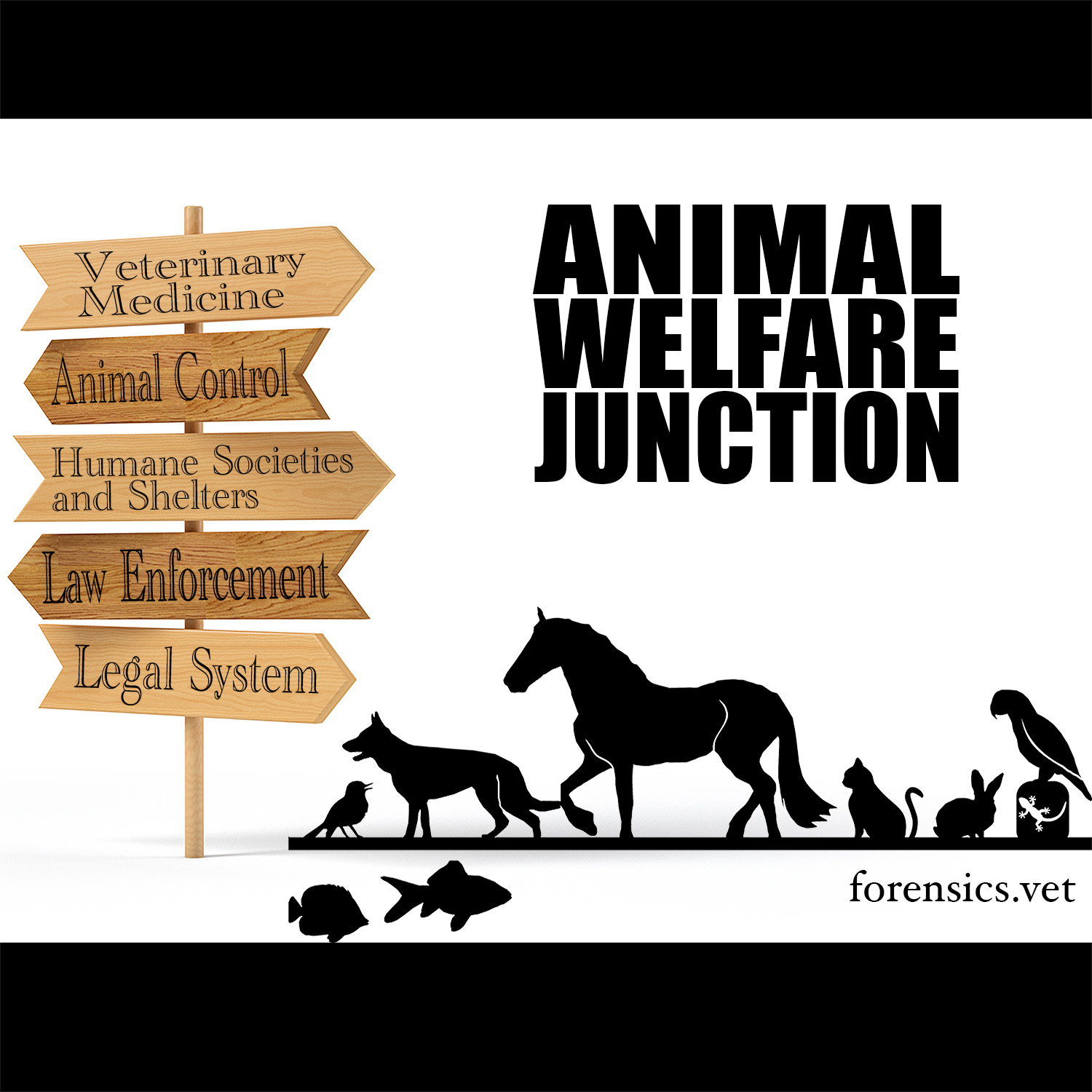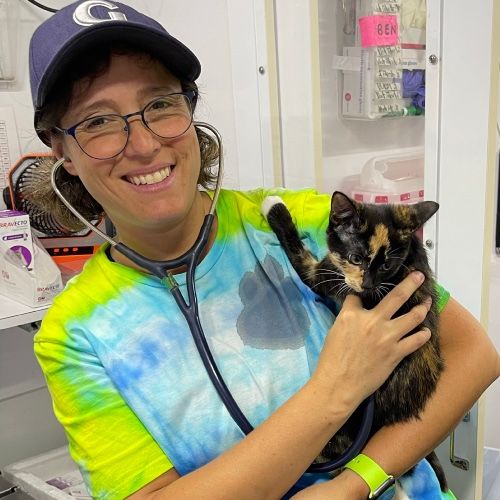UF Animal Forensic Conference 2024: Venomous Reptiles with Robert O'Horo
We are in person at the 2024 Animal Forensic Conference in Gainesville, Florida! Dr. G will be interviewing several of the speakers to give our audience a bit of the knowledge gained through the presentations. We will be releasing each interview individually to allow our listeners to find topics of interest.
Snakes! What you don't know may hurt you. Robert O'Horo from Florida Fish and Wildlife discusses the venomous snakes most commonly found in the U.S., the mechanism of their venom, and how to avoid a deadly encounter.
We would also like to invite our listeners involved in animal cruelty investigations to visit and join the International Society for Animal Forensic Sciences https://isafs.org/
Mentioned in this episode:
Keep it Humane Podcast Network
The Animal Welfare Junction is part of the Keep It Humane Podcast Network. Visit keepithumane.com/podcastnetwork to find us and our amazing animal welfare podcast partners.
Transcript
Our next guest is Robert O'Horo and he's going to be talking
2
:to us about venomous reptiles.
3
:Thank you very much for being
here and welcome to The Junction.
4
:Robert O'Horo: Well, thanks for having me.
5
:DrG: Can we start by telling us
your background, uh, your education
6
:and where you're at right now?
7
:Robert O'Horo: Sure.
8
:Uh, I'm a retired lawyer.
9
:I went to law school, practiced law
for about 10 years, uh, decided I
10
:wanted to do something different.
11
:Ended up taking a job with Florida Fish
and Wildlife 18 and a half years ago.
12
:I'm an investigator for Florida
Fish and Wildlife now for about
13
:the past 10 years, uh, focusing in
the, uh, Captive Wildlife Division.
14
:DrG: Excellent.
15
:So this is a topic that is kind of creepy
for me because I am afraid of snakes.
16
:So I guess the main question
is, what is the difference
17
:between venomous and poisonous?
18
:Robert O'Horo: Well, I'm not
a trained biologist, but I
19
:do know that answer to that.
20
:So, uh, poison is something you ingest.
21
:Um, so if it's, uh, a mushroom,
it's going to be poisonous.
22
:Uh, certain frogs , if you were to ingest
them, they're poison dart frogs because
23
:they're poisonous, they secrete a poison.
24
:Venomous is usually something
that's injected, uh, like a
25
:sting, or fangs from a snake
26
:.
DrG: What are the most common snakes that we're going to find in the, in the U.
27
:S.
28
:that are venomous?
29
:Robert O'Horo: Um, I would say our
rattlesnakes are the most well known.
30
:Uh, there's about 32
species of rattlesnakes,
31
:throughout the United States.
32
:So most states, not all, but most
states have at least one rattlesnake.
33
:Um, and so that's pretty common.
34
:Uh, we've got the cottonmouths and, and
copperheads, which are found more in
35
:the eastern part of the United States.
36
:DrG: Now, does the venom differ
between snakes or do they all
37
:do kind of the same thing?
38
:Um,
39
:Robert O'Horo: Uh, no, there's
quite a bit of difference.
40
:Uh, and there's people that have
spent their careers analyzing
41
:venom, and how it differs.
42
:So it differs among, um, the
families of venomous snakes.
43
:So there's, you know, the elapid family,
which is the cobras and the coral snakes.
44
:They have a particular type of
venom, uh, neurotoxic that tends
45
:to, to work on the nervous system.
46
:And then of course you've got
the rattlesnakes and some other
47
:snakes that have venom that acts
more to digest tissue and flesh.
48
:And then, of course, there's all of these
snakes that have a mixture and there's all
49
:different types of, of venom components.
50
:There's like certain toxins
that affect the heart.
51
:Um, some snakes have that, some don't.
52
:Um, so it's, it's extremely complex.
53
:Um, I'm certainly not an
expert in, in that complexity.
54
:And there's, there's people that
have spent their entire life, uh,
55
:researching, analyzing and categorizing
the different types of venoms.
56
:DrG: So when somebody gets bitten
by one of these snakes, is the
57
:venom like universal or are there
different types of antivenom?
58
:Robert O'Horo: It really depends.
59
:So we've done something
here in the United States.
60
:We've created, , or a company
has created, polyvalent.
61
:anti venom for viper bites
here in the United States.
62
:So if you're bitten, for example,
in Florida, whether you're bitten
63
:by a cottonmouth, a copperhead, an
eastern diamondback rattlesnake, or
64
:a, uh, a pygmy rattlesnake, you're
going to get the same anti venom.
65
:So if you go to a hospital and
you've got swelling and two, you
66
:know, snake bite marks, two fang
marks, and you can't identify the
67
:snake, it's okay because you're going
to get the anti venom that works.
68
:And the way they do that is when
they create the anti venom, they
69
:use venom from all of those snakes
to create the plasma that they're
70
:going to create the anti venom from.
71
:So that's a little bit different with
coral snakes that requires a particular
72
:antivenom specific to coral snakes.
73
:But once you get outside of
the United States, um, there's
74
:probably, you know, over 600
species of venomous, uh, reptiles.
75
:There's all kinds of anti venoms
and usually, you know, in those
76
:situations, you need to know
what you've been bitten by.
77
:Um, there are other countries that
are producing anti venoms that are
78
:also polyvalent for their area.
79
:Um, but, you know, it's,
it gets complicated.
80
:DrG: I've always heard about being
able to look at, like, the snake's eyes
81
:to determine if it's venomous or not.
82
:Is that true?
83
:And also, like, what kind of things
do people need to pay attention
84
:to, to identify the type of snake
to see if it's venomous or not?
85
:Robert O'Horo: So, that can be, that can
assist you in making an identification,
86
:but I wouldn't lean on eye shape, mainly
because if it's a, if it's a venomous
87
:snake that has an elliptical pupil, if
it's If it's dark out and the pupils
88
:dilated, that's going to appear round.
89
:Um, so, and there are snakes that are
non venomous that have elliptical pupils.
90
:So, that's not, I mean, I
wouldn't, I wouldn't favor that
91
:as my primary go to warning.
92
:But, and plus you usually have
to be pretty close to see that.
93
:Um, I would just become familiar with
the snakes in your area where you live,
94
:uh, because, you know, we do have a lot
of diversity here in the United States.
95
:Although we have 32 rattlesnake
species, give or take, um, they
96
:don't all occur in one place.
97
:So if you live in Utah, there's a
handful of snakes you should know.
98
:Uh, if you live in Florida, there's
six that you should know, um, if
99
:you're going to be outdoors and
recreating and things like that.
100
:DrG: I've been in some cruelty cases,
cruelty investigations that are out in
101
:the wild and they they'll tell us these
are the snakes that are in this area.
102
:And I'm certainly not going around
looking for these snakes, but how
103
:aggressive are these snakes like do.
104
:Do you have to worry about just
walking around minding your own
105
:business and them coming out of
your, out of their way to bite you?
106
:Robert O'Horo: No, not here.
107
:Uh, at least in the United States,
it seems like most of our snakes
108
:are pretty defensive in nature.
109
:Um, I've had a lot of experience, uh,
with Eastern diamondback rattlesnakes,
110
:and I would say every single one that
I've approached has tried to get away.
111
:And I'll often hear stories of
people who stepped right next to
112
:one and the snake didn't bite.
113
:Now, if they had stepped on it, they
probably would have been, been bitten.
114
:But, um, yeah, we just don't seem to
have any snakes that go out of their way.
115
:I the cottonmouth has had a
reputation for chasing people.
116
:Uh, and they sometimes do come towards
people, but usually it's because they're
117
:trying to flee to where they perceive
safety is, and you're just in the way.
118
:Um, so I tell people if a cottonmouth
is coming straight at you, get off
119
:the X, move, and chances are it will
continue on its way, on its path.
120
:Um, there are snakes in other
countries that aren't quite like that.
121
:I've dealt with some cobras myself
that when they get agitated,
122
:they will come after you.
123
:And when you do get off the X, they
will change course and follow you.
124
:Um, and black mambas have
been known to do that.
125
:So there are snakes in the
world that are aggressive, but
126
:I don't think we have any here.
127
:DrG: So if somebody is going to be going
to a different area and wants to become
128
:acquainted with what kind of snakes to
expect, what, what resources are out
129
:there to be able to find that information?
130
:Robert O'Horo: So if it's the United
States, the DNR, uh, Department
131
:of Natural Resources for that
particular state, almost all states
132
:have a really good web page.
133
:Um, and, you know, there's a lot
of good resources online now.
134
:Um, I would just try to make sure you
get, get it from some reputable source,
135
:whether it's the DNR in that state or, or,
or something, not just a random web page.
136
:DrG: Great.
137
:Well, thank you so much for
being here and for sharing this
138
:information and for what you do.
139
:Robert O'Horo: Well, thank you.
140
:I appreciate it.

